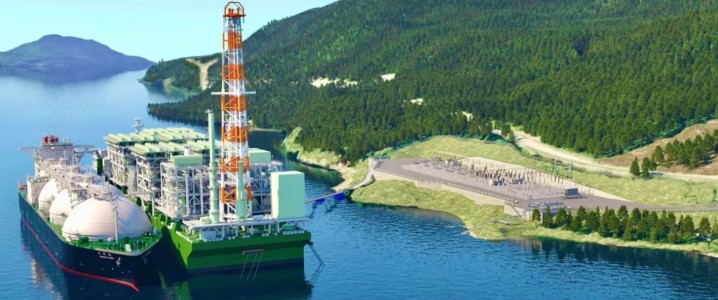The Canadian energy landscape is set for a significant transformation with substantial governmental investment pouring into the Cedar liquefied natural gas (LNG) project, positioning it as a pivotal player in the nation’s export ambitions. This collaborative venture signifies a strategic move to bolster Canada’s presence in the global energy market, aiming to meet burgeoning international demand for cleaner fuel sources.
Both the British Columbia provincial government and the federal government have committed CAD$200 million each to the Cedar LNG project, underscoring a unified national effort to accelerate major energy infrastructure. This combined public sector backing highlights the strategic importance attributed to the project, which has seen its estimated cost rise to $5.9 billion.
Jointly owned by the Haisla First Nation and Pembina Pipeline Corp, Cedar LNG is poised to commence operations by late 2028. The facility, a state-of-the-art floating natural gas liquefaction plant and marine export terminal, is strategically located in the Douglas Channel near Kitimaat Village, a Haisla community, and is designed to export approximately 3.3 million tonnes of natural gas annually to key Asian markets.
A key differentiating factor for the Cedar LNG project is its commitment to low-emission operations. The liquefaction plant will be powered predominantly by hydroelectricity, including energy sourced from the recently completed Site C dam, setting a new benchmark for environmentally conscious energy production within the industry.
Similar to the pioneering LNG Canada project, Cedar LNG will receive its natural gas supply via the Coastal GasLink pipeline, with an 8-kilometer spur specifically constructed to feed the facility. The complex process of liquefaction, which involves cooling natural gas to an extreme minus 163 degrees Celsius, demands continuous, high-power compression units operating round-the-clock.
While proponents argue that Canadian LNG exports, like those from Cedar LNG, can significantly contribute to reducing global greenhouse gas emissions by displacing dirtier fuels such as coal, environmental advocacy groups raise valid concerns. They point to the inherent emissions generated throughout the LNG lifecycle, encompassing drilling, flaring, liquefaction, and transportation processes.
Canada’s progress in the LNG sector, though steady, is often compared to the rapid expansion seen in other nations. Despite a relatively late start, with only one major plant currently operational compared to numerous facilities in the United States, there’s a strong push to capitalize on Canada’s distinct market advantages, including its favorable proximity to Asian markets and its commitment to lower-emission production.
This investment aligns seamlessly with broader governmental initiatives aimed at streamlining major project reviews, reflecting an ambition to solidify Canada’s status as a global energy superpower. Such legislation seeks to expedite approvals for “nation-building” projects, addressing historical challenges of duplicated environmental permitting processes involving federal, provincial, and First Nations authorities.
Globally, floating liquefied natural gas (FLNG) terminals are experiencing a resurgence, with projections indicating a threefold increase in capacity by 2030. Once hindered by operational hurdles, FLNG projects now boast utilization rates comparable to their onshore counterparts, offering a flexible, cost-effective, and faster solution for unlocking previously inaccessible gas reserves amidst rising global LNG demand.






Leave a Reply